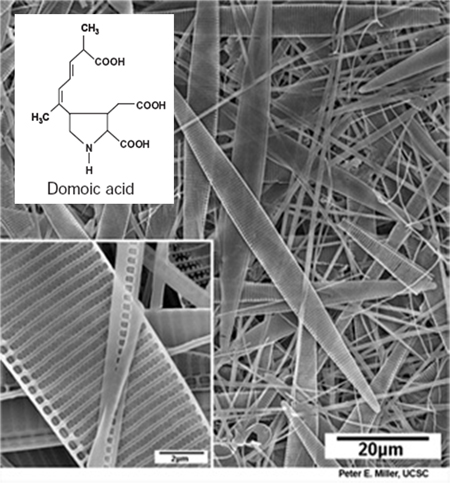Understanding the Toxin Express:
A Historical Record of Rapid Downward Transport
of Domoic Acid in Coastal Waters
By:Dr. Claudia Benitez-Nelson
Department of Earth and Ocean Sciences & Marine Science Program
University of South Carolina
When: |
Friday, February 5, 2010, 10:30 a.m. to 11:30 a.m. |
Where: |
BEG Conference Room, 10100 Burnet Road, Bldg 130, Austin, Texas 78758 |
Host: |
Gail Christeson, UTIG |
Abstract
Toxic blooms of a variety of organisms (harmful algal blooms (HABs)) have been documented throughout the world's coastal oceans, ultimately impacting shellfish, finfish, marine mammals and birds over large areas. Several such toxic species belong to the genus Pseudo-nitzschia, a group of marine diatoms that produce the neurotoxin domoic acid (DA) and are commonly found on the West Coast of North America, the Gulf of Mexico and in European waters. Most research surrounding DA has focused on the inception of blooms within surface waters and food web transfer. In contrast, relatively little work has focused on the export of DA to deeper waters because it was commonly thought that most DA readily photodegrades in the sunlit portion of the ocean. Recent evidence from my laboratory, however, suggests that rapidly sinking particles may be a substantial source of DA to bottom sediments, where it can enter the food chain of both nearshore and benthic biota (e.g. flatfish and crabs) and perhaps persist for long time periods. The strong correlation found between toxic Pseudo-nitzschia surface blooms and sediment traps placed at ~540 m in the Santa Barbara Basin (SBB), California further suggests that sediment traps may provide a historical record of surface water DA events in the absence of surface water monitoring. In this seminar, DA measurements from bimonthly sediment trap samples collected from the SBB from

August 1993 through May 2008 are presented (n = 206). These samples reveal periodic toxin events occurring in the SBB as early as 1994 including five large-scale events from 2001 to 2007. In several, but not all, instances, sediment trap toxin events from the center of the basin coincide with nearshore DA events identified by shellfish monitoring. Mechanisms that may promote DA particle fluxes in the SBB are explored and placed in perspective of SBB meteorology, physical mixing, and biogeochemistry.




